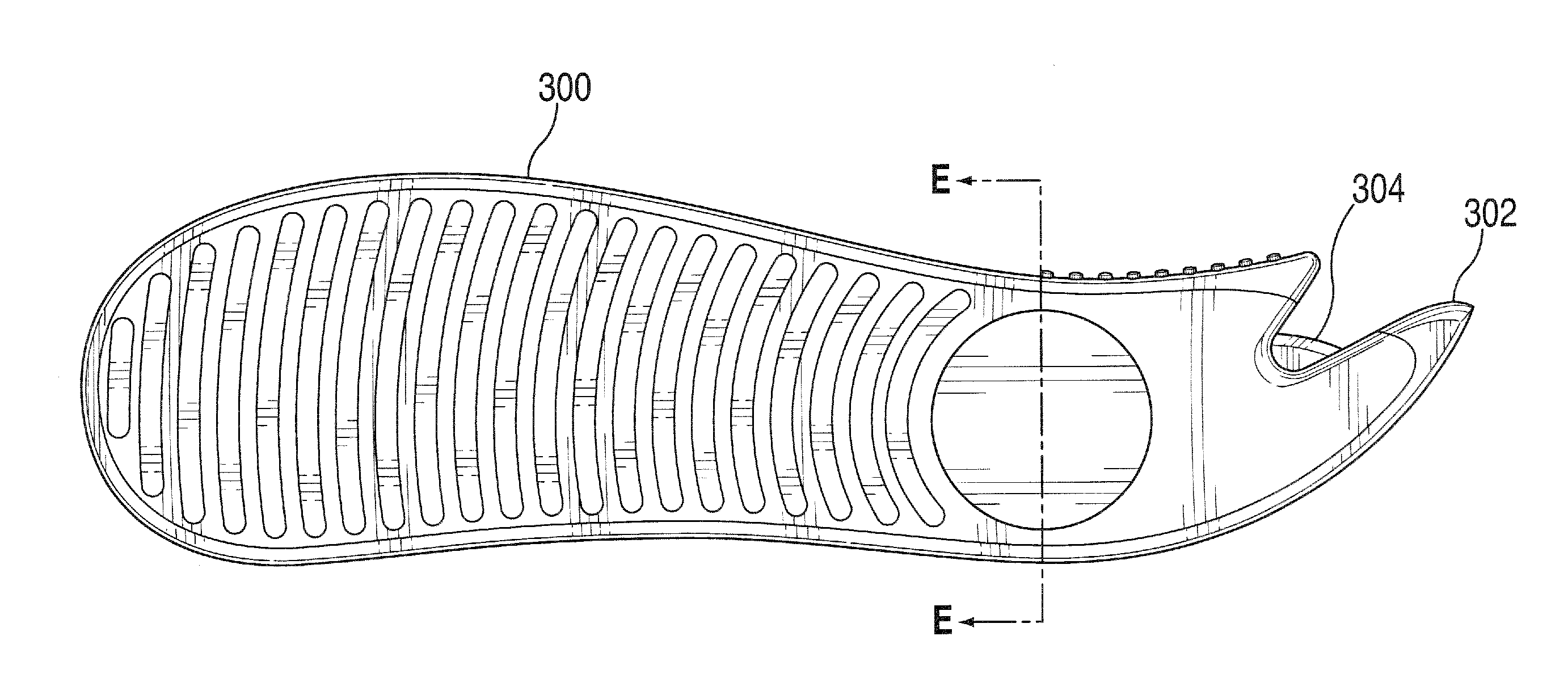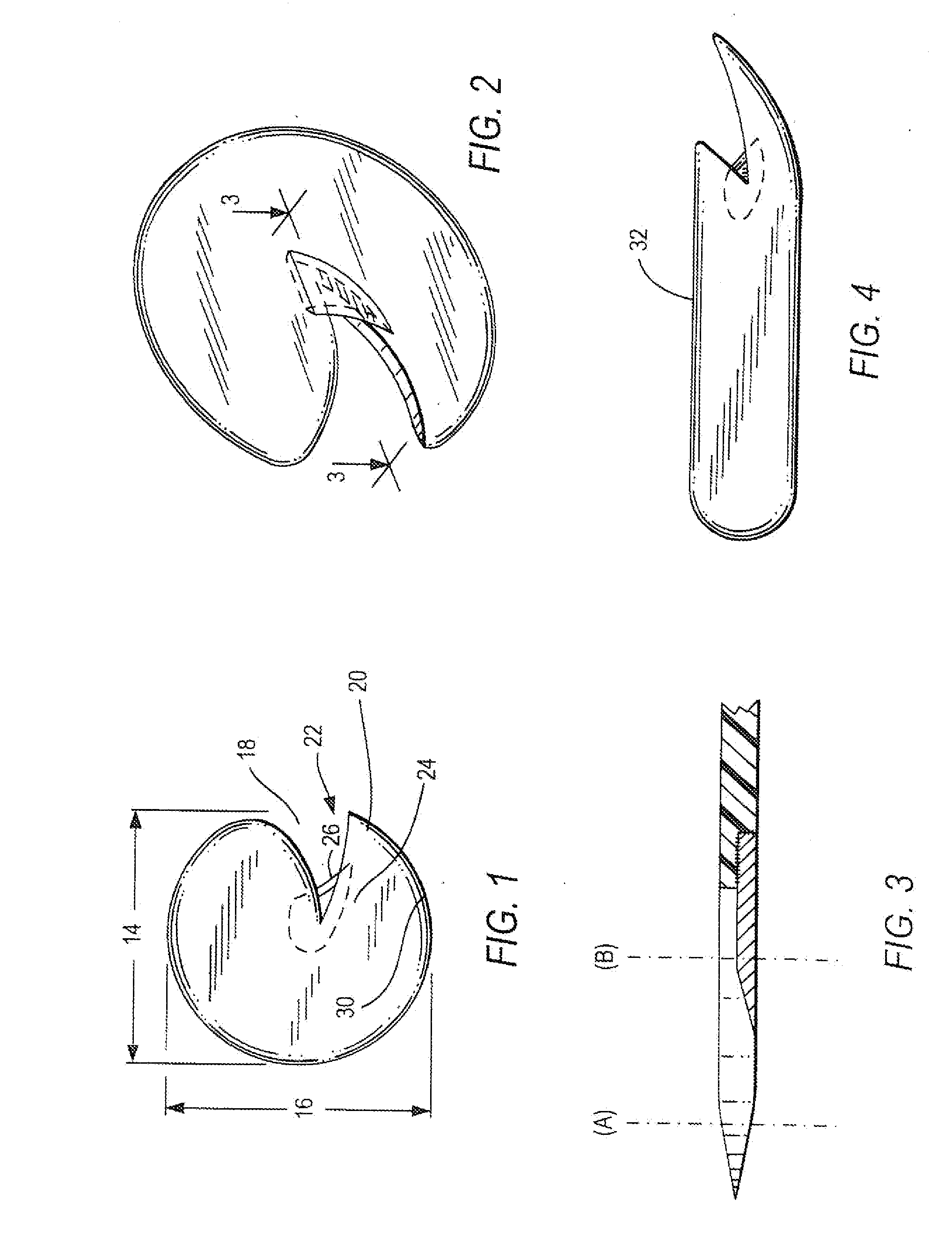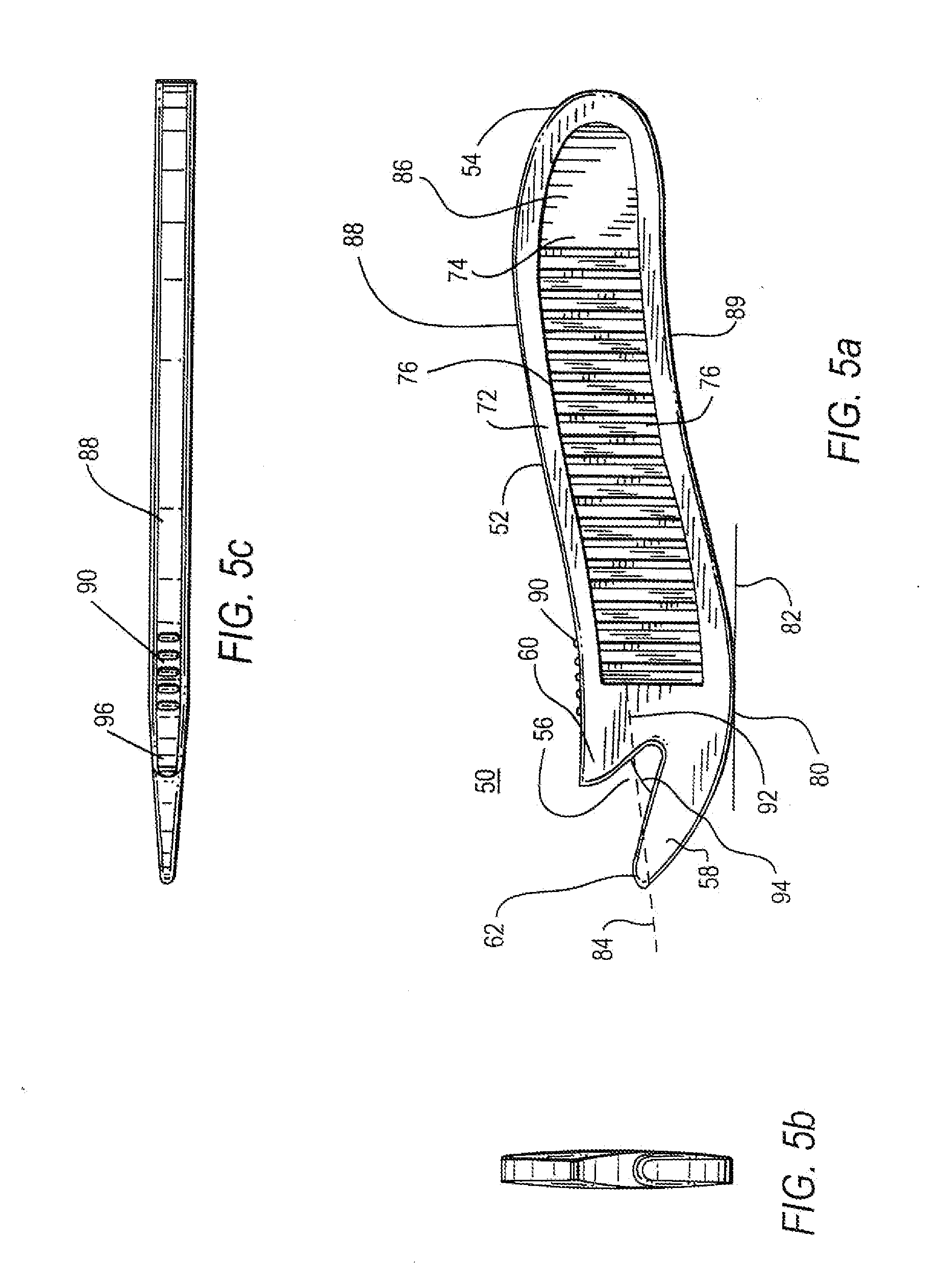Two-part surgical device
a surgical device and two-part technology, applied in the field of obstetric surgery, can solve the problems of unsatisfactory accepted techniques, difficult to control the depth of cuts, injury to the fetus, etc., and achieve the effect of facilitating different kinds of manipulation and preventing undesirable damag
- Summary
- Abstract
- Description
- Claims
- Application Information
AI Technical Summary
Benefits of technology
Problems solved by technology
Method used
Image
Examples
Embodiment Construction
[0033]Referring first to FIGS. 1-3, a device 10 for performing incisions for a c-section includes a generally oval body 12 having a width 14 and a height 16 of about 50-80 mm and a thickness of about 3-6 mm. Other dimensions and shapes are suitable as well, as long as the device is light and comfortable to hold. The body is made with a triangular notch 18 forming a beak 20. The beak 20 is terminated with a rounded point 22. The notch holds a cutting blade 24 formed with a sharp edge 26.
[0034]The device 10 is used as follows. First, the tissue is punctured with the point 22. The beak 20 is then inserted through the resulting hole and advanced until the lateral side of the hole (not shown) is reached by the edge 26. The device is then advanced causing the edge 26 to make a clean incision of the desired length. While the skin or other membrane (e.g., the uterus) is being cut during this process, a lower surface 30 of the beak 20 separates the tissues of the organ or the fetus disposed ...
PUM
 Login to View More
Login to View More Abstract
Description
Claims
Application Information
 Login to View More
Login to View More - R&D
- Intellectual Property
- Life Sciences
- Materials
- Tech Scout
- Unparalleled Data Quality
- Higher Quality Content
- 60% Fewer Hallucinations
Browse by: Latest US Patents, China's latest patents, Technical Efficacy Thesaurus, Application Domain, Technology Topic, Popular Technical Reports.
© 2025 PatSnap. All rights reserved.Legal|Privacy policy|Modern Slavery Act Transparency Statement|Sitemap|About US| Contact US: help@patsnap.com



